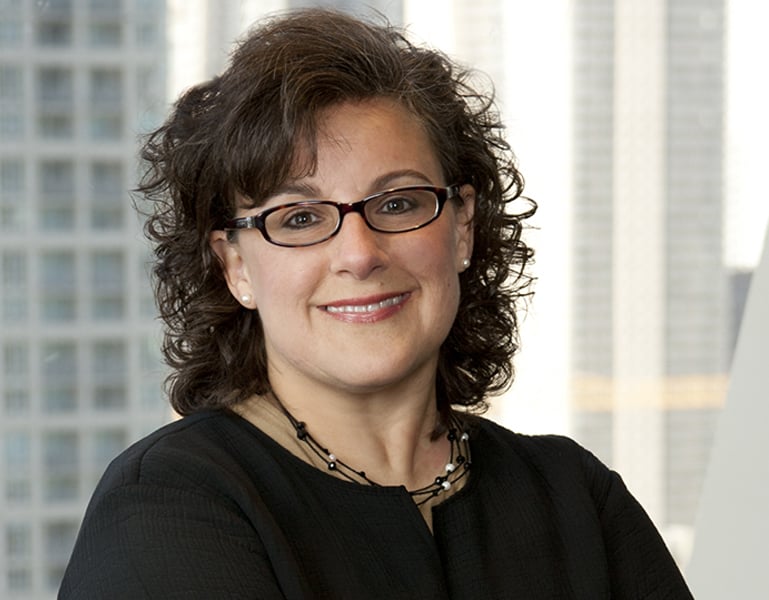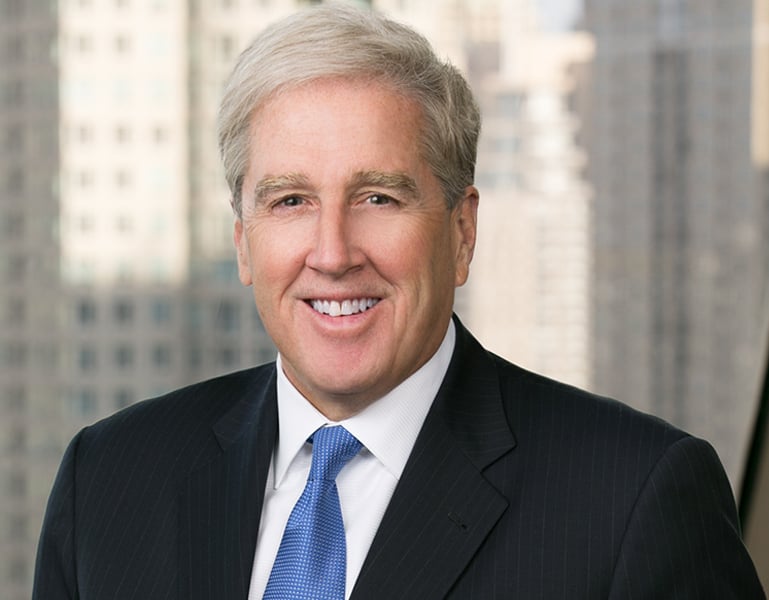De Novo Bank Formation: Is Now the Right Time?
According to the Federal Deposit Insurance Corporation ("FDIC"), from 2000 to 2008 there were 1,042 community bank de novos newly chartered in the U.S. A staggering number when compared to the number of de novos chartered since 2011, which currently stands at eight. Since 2011, there have only been 21 de novo bank applications filed, and only eight community bank de novos chartered. Seeing that the FDIC has begun to warm to the idea of accepting de novo bank applications, it may be time for interested investors to assess the possibility of entering the community bank industry.
Barriers to Increased De Novo Activity
Over the years, much discussion has taken place as to the reasons why de novo bank formation has been suppressed. Although many industry commentators blame individual actors or courses, the truth is that a combination of factors have made investors wary of the enterprise of forming a de novo bank. The most commonly cited factors are listed below.
1. Cyclicality. Historically, de novo formation has always been cyclical. When the economy is in recession so is de novo activity. Thus, while the U.S. economy growth has remained sluggish since the recession, one could expect investors' expectations to remained sluggish.
2. Interest Rates. Second, low interest rates and narrow net interest margins have kept bank profitability ratios (e.g., ROA and ROE) well below pre-crisis levels. As interest rates have remained low for an extended period of time, de novo activity can be seen to have remain stagnant during that same period. Banking simply has not been very profitable.
3. Regulatory Burden. Third, beginning in 2009, regulatory scrutiny and heightened compliance requirements took shape to slow de novo bank formations. Regulators placed increasing emphasis on compliance with Bank Secrecy Act/anti-money laundering requirements, implementation of enterprise risk management systems, and effective corporate governance. In addition to the increased regulatory burden faced by all banks, de novo banks faced an extra burden. Specifically, in 2009, the FDIC issued Financial Institution Letter (“FIL”) 50-2009 to address the heightened risks presented by de novo banks. Under this guidance, the FDIC extended the de novo period for state nonmember institutions from three to seven years for heightened examinations, capital maintenance and other requirements.
4. Regulatory Criticism. During the financial crisis, de novo banks were found to have a failure rate of more than twice that of smaller established community banks. As a result of those failures, the FDIC was heavily and publicly criticized for approving such a high number of de novo bank formations. Consequently, during the years immediately following the financial crisis, the FDIC became hesitant to approve de novo bank applications.
The Path to Regulatory Approval
Recently, the FDIC has signaled to the market that it has warmed to the idea of accepting de novo bank applications for FDIC insurance. In a show of support, the FDIC has taken the following actions to promote de novo applications during the past year:
- On April 6, 2016, the FDIC rescinded FIL-50-2009, Enhanced Supervisory Procedures for Newly Insured FDIC-Supervised Depository Institutions. This action lessened the regulatory burden on de novo banks by reducing the extended heightened examination, capital and other requirements for de novo banks from seven to three years.
With the rescission of FIL-50-2009, the FDIC reverted to its historical guidance as found in the FDIC Statement of Policy on Applications for Deposit Insurance ("Policy"). Under this Policy, for a period of three years after approval, newly insured de novo community banks must do the following:
- maintain capital accounts sufficient to provide a Tier 1 capital to assets leverage ratio of 8.0%, at a minimum; and
- report to the primary federal regulator any significant deviation from the business plan prior to any such deviation.
In addition to these Policy requirements, a de novo community bank is also subject to more frequent and broader scope examinations, generally every 6 to 12 months. Annual examination intervals for more established community banks may be extended for up to 18 months.
-
Also in April 2016, the FDIC supplemented the Questions and Answers to the FDIC Statement of Policy on Applications for Deposit Insurance ("Q&As") to address multiple issues related to applicant-submitted business plans. The FDIC's stated purpose was to provide clarity as to what is expected in a de novo bank’s submitted business plan. Although there is not a specific blueprint for any proposed business plan, other than those items required to be addressed in the application, the FDIC has provided a level of increased transparency by identifying items that should be considered and addressed in an applicant’s submitted business plan.
-
In August 2016, the FDIC issued its Summer 2016 – Supervisory Insights Journal ("Supervisory Insights"). Within its Supervisory Insights, the FDIC restated its commitment to providing support to prospective investor groups with an interest in organizing a de novo bank. In addition, the FDIC summarized the application process for deposit insurance, summarized how the application will be evaluated and restated its conditions for approval of an application. The fact that the FDIC is even addressing the subject of de novo charters is a sure sign of a more open regulatory environment.
Common characteristics of newly filed de novo bank applications
As evidence of an increasingly more hospitable landscape for prospective de novo bank formations, the marketplace has seen a growing uptick in de novo activity. Below are some of the common characteristics of the de novo applications filed during the last year.

As the information set forth above indicates, there are consistent and common features to each of the above applications. While every application is unique to the prospective institution, one can glean a hint of what regulators expect to see in any de novo bank application.
First, although the processing time for any de novo application is unique to the prospective institution, the average processing time from submission to receipt of organizational approval ranges from six to nine months.
Second, the average initial capitalization (shareholder equity) for these applications is $30 million. Some might clearly remember pre-recession days when investors could form a de novo bank with an initial capitalization of $10-15 million. Those days appear to be long gone. Prospective investors will need to locate and gather a significant amount of cash.
Third, de novo bank applicants should take note that regulators expect to see significant banking experience in prospective management. This remains true when selecting the de novo bank's chief executive officer and chief credit officer. A de novo community bank application with an executive management team lacking strong experience in banking is a nonstarter.
Fourth, regulators are insistent upon the de novo bank's board of directors having a significant level of banking experience as well. Of course, not every member of the board of directors is expected to have significant banking experience, but the information above tends to show a range of 30 to 60 percent of the board as having banking experience.
Fifth, as compliance costs have skyrocketed, de novo bank applicants have increasingly sought to outsource activities that have traditionally been handled in-house. The types of activities outsourced appear to be consistent in each of the recently filed applications, and reflect the general trends in the industry.
Sixth, as in any business, executive and employee compensation is front and center. The de novo bank applications each provide stock option plans as standard means of compensation. As de novo banks are typically cash-strapped during the first three years, stock option plans provide both a means of incentivizing and retaining key employees in a cost effective manner. The FDIC has historically been vocal on this point, and it carefully reviews any stock option plan in accordance with enumerated guiding factors. In any stock option plan, the structure should encourage the continued involvement of any grantees and serve as an incentive for the successful operation of the de novo institution. Further, stock option plans should contain no feature that would encourage speculative or high risk activities or serve to impede the sale of additional stock.
Lastly, of the above-listed de novo applications, four were filed in Southern California and one in Southern New Hampshire. Both the Southern California and Southern New Hampshire markets have seen steady growth, rising commercial investment and increased M&A activity during the last six years. Consequently, these de novo applications have been filed in stabilized markets with the commercial capacity to attract and sustain de novo banks.
Conclusion
As the FDIC has warmed to the idea of supporting de novo bank applications, it may be the time to evaluate investment opportunities in the community banking space. While it is true that the current state of the marketplace remains less than completely inviting, it is also true that investors who are interested in forming a de novo bank have a more transparent path to regulatory approval then at any time since the financial crisis.
To view the full text of the FDIC's Summer 2016 – Supervisory Insights Journal,
click here.
To view the FDIC Statement of Policy on Applications for Deposit Insurance, click here.
To view FIL 24-2016, Supplemental Guidance Related to the FDIC Statement of Policy on Applications for Deposit Insurance, click here.
To view the full text of the now rescinded FIL-50-2009, Enhanced Supervisory Procedures for Newly Insured FDIC-Supervised Depository Institutions, click here.
For more information about the FDIC de novo application process and what it could mean for your institution, please contact James M. Kane at +1 (312) 609 7533, Daniel C. McKay, II at +1 (312) 609 7762, James W. Morrissey at +1 (312) 609 7717, Jennifer Durham King at +1 (312) 609 7835, Juan M. Arciniegas at +1 (312) 609 7655, Lisa M. Simonetti at +1 (424) 204 7738, Mark C. Svalina at +1 (312) 609 7741 or your Vedder Price attorney.
Vedder Thinking | Articles De Novo Bank Formation: Is Now the Right Time?
Newsletter/Bulletin
September 30, 2016
According to the Federal Deposit Insurance Corporation ("FDIC"), from 2000 to 2008 there were 1,042 community bank de novos newly chartered in the U.S. A staggering number when compared to the number of de novos chartered since 2011, which currently stands at eight. Since 2011, there have only been 21 de novo bank applications filed, and only eight community bank de novos chartered. Seeing that the FDIC has begun to warm to the idea of accepting de novo bank applications, it may be time for interested investors to assess the possibility of entering the community bank industry.
Barriers to Increased De Novo Activity
Over the years, much discussion has taken place as to the reasons why de novo bank formation has been suppressed. Although many industry commentators blame individual actors or courses, the truth is that a combination of factors have made investors wary of the enterprise of forming a de novo bank. The most commonly cited factors are listed below.
1. Cyclicality. Historically, de novo formation has always been cyclical. When the economy is in recession so is de novo activity. Thus, while the U.S. economy growth has remained sluggish since the recession, one could expect investors' expectations to remained sluggish.
2. Interest Rates. Second, low interest rates and narrow net interest margins have kept bank profitability ratios (e.g., ROA and ROE) well below pre-crisis levels. As interest rates have remained low for an extended period of time, de novo activity can be seen to have remain stagnant during that same period. Banking simply has not been very profitable.
3. Regulatory Burden. Third, beginning in 2009, regulatory scrutiny and heightened compliance requirements took shape to slow de novo bank formations. Regulators placed increasing emphasis on compliance with Bank Secrecy Act/anti-money laundering requirements, implementation of enterprise risk management systems, and effective corporate governance. In addition to the increased regulatory burden faced by all banks, de novo banks faced an extra burden. Specifically, in 2009, the FDIC issued Financial Institution Letter (“FIL”) 50-2009 to address the heightened risks presented by de novo banks. Under this guidance, the FDIC extended the de novo period for state nonmember institutions from three to seven years for heightened examinations, capital maintenance and other requirements.
4. Regulatory Criticism. During the financial crisis, de novo banks were found to have a failure rate of more than twice that of smaller established community banks. As a result of those failures, the FDIC was heavily and publicly criticized for approving such a high number of de novo bank formations. Consequently, during the years immediately following the financial crisis, the FDIC became hesitant to approve de novo bank applications.
The Path to Regulatory Approval
Recently, the FDIC has signaled to the market that it has warmed to the idea of accepting de novo bank applications for FDIC insurance. In a show of support, the FDIC has taken the following actions to promote de novo applications during the past year:
- On April 6, 2016, the FDIC rescinded FIL-50-2009, Enhanced Supervisory Procedures for Newly Insured FDIC-Supervised Depository Institutions. This action lessened the regulatory burden on de novo banks by reducing the extended heightened examination, capital and other requirements for de novo banks from seven to three years.
With the rescission of FIL-50-2009, the FDIC reverted to its historical guidance as found in the FDIC Statement of Policy on Applications for Deposit Insurance ("Policy"). Under this Policy, for a period of three years after approval, newly insured de novo community banks must do the following:
- maintain capital accounts sufficient to provide a Tier 1 capital to assets leverage ratio of 8.0%, at a minimum; and
- report to the primary federal regulator any significant deviation from the business plan prior to any such deviation.
In addition to these Policy requirements, a de novo community bank is also subject to more frequent and broader scope examinations, generally every 6 to 12 months. Annual examination intervals for more established community banks may be extended for up to 18 months.
-
Also in April 2016, the FDIC supplemented the Questions and Answers to the FDIC Statement of Policy on Applications for Deposit Insurance ("Q&As") to address multiple issues related to applicant-submitted business plans. The FDIC's stated purpose was to provide clarity as to what is expected in a de novo bank’s submitted business plan. Although there is not a specific blueprint for any proposed business plan, other than those items required to be addressed in the application, the FDIC has provided a level of increased transparency by identifying items that should be considered and addressed in an applicant’s submitted business plan.
-
In August 2016, the FDIC issued its Summer 2016 – Supervisory Insights Journal ("Supervisory Insights"). Within its Supervisory Insights, the FDIC restated its commitment to providing support to prospective investor groups with an interest in organizing a de novo bank. In addition, the FDIC summarized the application process for deposit insurance, summarized how the application will be evaluated and restated its conditions for approval of an application. The fact that the FDIC is even addressing the subject of de novo charters is a sure sign of a more open regulatory environment.
Common characteristics of newly filed de novo bank applications
As evidence of an increasingly more hospitable landscape for prospective de novo bank formations, the marketplace has seen a growing uptick in de novo activity. Below are some of the common characteristics of the de novo applications filed during the last year.

As the information set forth above indicates, there are consistent and common features to each of the above applications. While every application is unique to the prospective institution, one can glean a hint of what regulators expect to see in any de novo bank application.
First, although the processing time for any de novo application is unique to the prospective institution, the average processing time from submission to receipt of organizational approval ranges from six to nine months.
Second, the average initial capitalization (shareholder equity) for these applications is $30 million. Some might clearly remember pre-recession days when investors could form a de novo bank with an initial capitalization of $10-15 million. Those days appear to be long gone. Prospective investors will need to locate and gather a significant amount of cash.
Third, de novo bank applicants should take note that regulators expect to see significant banking experience in prospective management. This remains true when selecting the de novo bank's chief executive officer and chief credit officer. A de novo community bank application with an executive management team lacking strong experience in banking is a nonstarter.
Fourth, regulators are insistent upon the de novo bank's board of directors having a significant level of banking experience as well. Of course, not every member of the board of directors is expected to have significant banking experience, but the information above tends to show a range of 30 to 60 percent of the board as having banking experience.
Fifth, as compliance costs have skyrocketed, de novo bank applicants have increasingly sought to outsource activities that have traditionally been handled in-house. The types of activities outsourced appear to be consistent in each of the recently filed applications, and reflect the general trends in the industry.
Sixth, as in any business, executive and employee compensation is front and center. The de novo bank applications each provide stock option plans as standard means of compensation. As de novo banks are typically cash-strapped during the first three years, stock option plans provide both a means of incentivizing and retaining key employees in a cost effective manner. The FDIC has historically been vocal on this point, and it carefully reviews any stock option plan in accordance with enumerated guiding factors. In any stock option plan, the structure should encourage the continued involvement of any grantees and serve as an incentive for the successful operation of the de novo institution. Further, stock option plans should contain no feature that would encourage speculative or high risk activities or serve to impede the sale of additional stock.
Lastly, of the above-listed de novo applications, four were filed in Southern California and one in Southern New Hampshire. Both the Southern California and Southern New Hampshire markets have seen steady growth, rising commercial investment and increased M&A activity during the last six years. Consequently, these de novo applications have been filed in stabilized markets with the commercial capacity to attract and sustain de novo banks.
Conclusion
As the FDIC has warmed to the idea of supporting de novo bank applications, it may be the time to evaluate investment opportunities in the community banking space. While it is true that the current state of the marketplace remains less than completely inviting, it is also true that investors who are interested in forming a de novo bank have a more transparent path to regulatory approval then at any time since the financial crisis.
To view the full text of the FDIC's Summer 2016 – Supervisory Insights Journal,
click here.
To view the FDIC Statement of Policy on Applications for Deposit Insurance, click here.
To view FIL 24-2016, Supplemental Guidance Related to the FDIC Statement of Policy on Applications for Deposit Insurance, click here.
To view the full text of the now rescinded FIL-50-2009, Enhanced Supervisory Procedures for Newly Insured FDIC-Supervised Depository Institutions, click here.
For more information about the FDIC de novo application process and what it could mean for your institution, please contact James M. Kane at +1 (312) 609 7533, Daniel C. McKay, II at +1 (312) 609 7762, James W. Morrissey at +1 (312) 609 7717, Jennifer Durham King at +1 (312) 609 7835, Juan M. Arciniegas at +1 (312) 609 7655, Lisa M. Simonetti at +1 (424) 204 7738, Mark C. Svalina at +1 (312) 609 7741 or your Vedder Price attorney.



